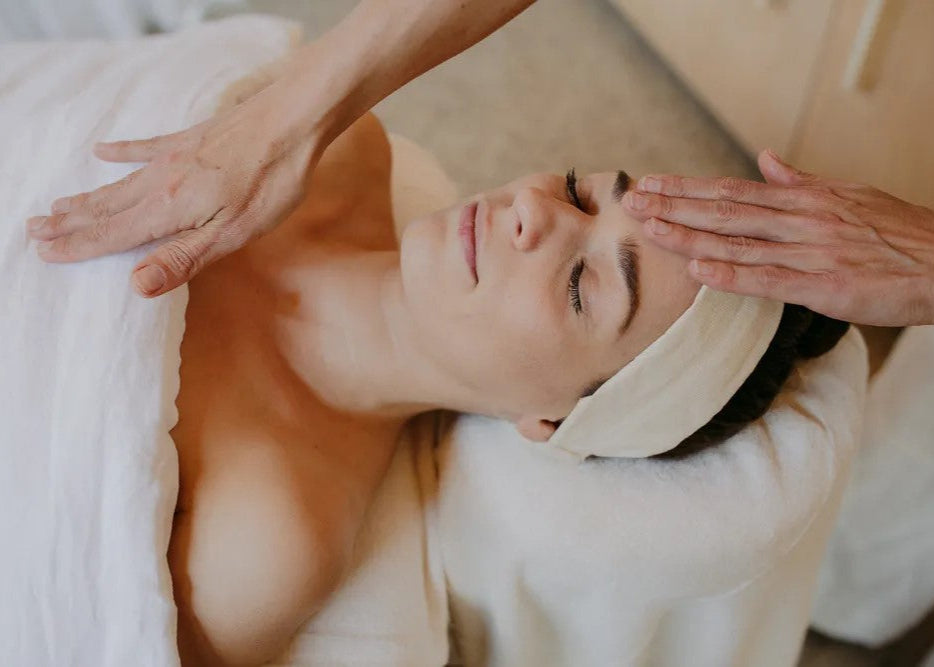
Our Skin: The Most Visible Biomarker
“When we learn to read our skin, we learn to understand ourselves,” reflects Theme Rains, Founder of Synthesis Organics.
In a world increasingly obsessed with advanced diagnostics—wearables tracking every heartbeat, lab results mapping metabolites, and high-tech biomarkers forecasting future health—we often neglect our body’s oldest, wisest, and most visible health monitor: our skin.
Across traditions and modern science, skin stands as the body’s most honest storyteller, quietly reflecting the balance of rest, vitality, and internal harmony or signaling disruption when health is compromised.
Skin reveals the narrative of our biology in a language both subtle and immediate. The fresh radiance after restful sleep, the sallow dullness associated with fatigue, and the elasticity or dryness of texture—all speak volumes about how we eat, hydrate, manage stress, and respond to environmental shifts. These daily changes are more than cosmetic; each color shift, blemish, or patch of dryness can offer real-time insight into our hormonal, metabolic, and emotional state.
Unlike isolated biomarker data points locked away inside reports, skin communicates constantly and accessibly. It acts as a living mirror of vitality and a canvas of renewal. By learning to decipher its messages, we move beyond a surface approach—recognizing skin not as mere appearance but as a profound biofeedback mechanism.
Listening to What Skin Says
What if, instead of seeing every imperfection as a problem, we treated skin changes as useful feedback? Next time you pass by the mirror, take a moment to notice what your skin is saying. Blemishes or dullness might simply be your body asking for more sleep, less stress, or better nutrition. By learning to listen, we move closer to real self-awareness.
Why Skin Belongs in the Biomarker Conversation
We often think of skin as our body’s outer covering—a surface for beauty routines and self-expression. Recent research, though, shows that skin is a window into our inner health. Not only does it react to things like sun and pollution, but it also reflects aging, changes in our immune function, and even our moods. Skin changes can sometimes show up before any other warning signs, making it a valuable early signal for health.
How Skin Shows Aging
Visible skin changes—thinning, decreased elasticity, pigment alteration, and barrier decline—are more than aesthetic concerns. These shifts reflect deeper, systemic processes: oxidative stress, mitochondrial dysfunction, and cellular senescence. Skin, exposed continuously to environmental, immune, and metabolic stress, often manifests signs of aging before other issues.
How Lifestyle Shows Up On Skin
The choices we make every day leave their mark. Not enough sleep, too much stress, poor diet, and harsh environments can all show up as dullness, redness, or faster aging on our skin. Amazingly, our emotional state can even be measured through the way our skin responds, connecting our feelings to our biology.
The Whole Body in One Place
Skin doesn’t work alone. It’s tightly linked to our circulatory, immune, endocrine, and metabolic systems. For example:
-
Psoriasis: This common skin condition is about more than dry patches—it's connected to widespread inflammation and even heart health.
-
Systemic sclerosis: Scientists can find clues about this condition’s severity by analyzing proteins in skin or blister fluid.
Doctors and researchers are also using skin samples to decode genetic and molecular markers, helping them tailor treatments to each person’s unique biology.
Rethinking Beauty: Biofeedback from Within
Beauty is sometimes dismissed as superficial, yet what if it is the body’s most accessible dialog with itself? By caring for skin, we engage in a form of informed self-listening. Skin care thus becomes a mindful practice and partnership—helping us notice changes, interpreting, signals, and responding to what our bodies really need. In this way, beauty becomes biofeedback—a simple, real-time dialog between body and self.
Skin becomes our guide, not just our cover—a communicator that keeps us in touch with what really matters: our health.
Conclusion
Skin is far more than appearance—it’s a living dashboard, revealing metabolic health, hormonal balance, immune resilience, stress, and aging. Every glow, blemish, or subtle shift carries a message from within, reflecting how we rest, renew, and adapt. By learning to read these signals and pairing observation with healthy habits, we gain an accessible, powerful insight into our wellbeing. Skin becomes more than a surface; it is both storyteller and compass, guiding us toward deeper health, self-awareness, and balance.






Leave a comment
This site is protected by hCaptcha and the hCaptcha Privacy Policy and Terms of Service apply.